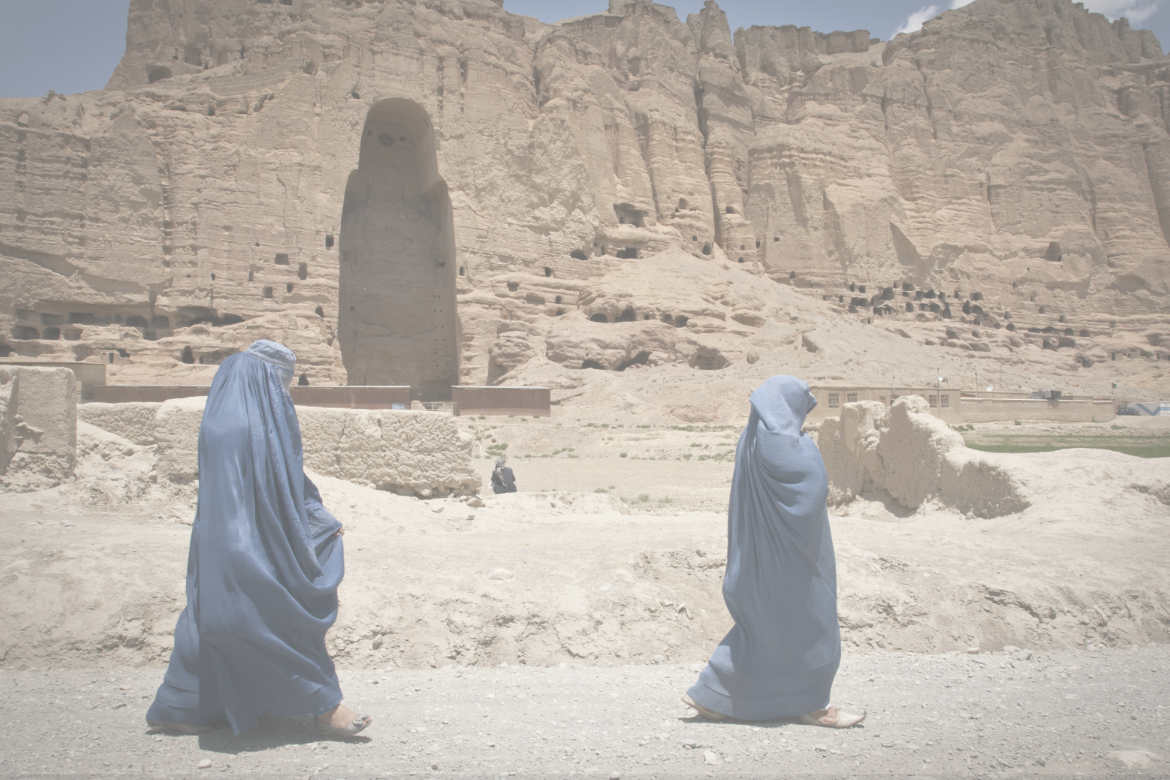
The 2021 fall of Afghanistan to the Taliban was bound to lead to detrimental consequences for women, but no one could imagine the speed at which the regime would seek to remove women from all facets of society. Maybe this was naivety on the part of the peacemakers, who believed the ideology of the Taliban had mellowed. Perhaps they thought the Taliban would govern Afghanistan in a different way to their previous regime, and would remain committed to the rights of women. These rights were enshrined in the 2003 constitution and committed to in the 2009 Elimination of Violence Against Women (EVAW) law. Yet, the Taliban have pursued their misogynistic ideology.
Today, Afghanistan is undergoing one of the worst gender-based systematic persecutions; effectively a gender apartheid. The recent decree; “Law on the Promotion of Virtue and Prevention of Vice”, has limited the rights of women to unprecedented levels. Rules include being unable to speak in public, own a smartphone, and attend high school or university. These edicts have had massive consequences, isolation being the most severe as these restrictions have led to women becoming virtually house-bound, with little to no outside contact. The removal of half the population has led to descriptions of Afghanistan as “half a nation”. Nazifa Haqpal, a former Afghan diplomat, states that this level of restriction “surpasses misogyny”. What is exceptionally disappointing, is this all sits in stark comparison to 1919 Afghan society where women gained the vote, before their American counterparts in the Western World.
This current regression in Afghanistan is not a cultural or religious norm, demonstrated by Afghan society prior to Taliban regimes. Rather, it is direct discrimination conducted by oppressive male politicians, using hardline Sharia Law, and their interpretation of it, to justify the denial of basic rights and opportunity. Islam does not restrict the lives of women in these devastating ways. In fact, many Islamic scholars and clerics have rejected the Taliban’s use of Islam as a justification for their policies, especially the ban on education. However, the Taliban considers the questioning of their edicts to be questioning Islam itself, even though there is no foundation for their actions in the Quran. This is evidenced by other conservative countries such as Saudi Arabia, where girls receive an education, women are allowed to drive, and there is access to healthcare for all.
Experts are divided on where this extreme interpretation of Sharia Law is derived from. Some believe it originates from tribal codes, especially the conservative Pashtun customs, which narrowly define a woman’s role in society. Historically, the Taliban received many recruits from these fundamentalist tribal areas, which has reinforced their ultra-conservative culture. Alternatively, some believe the century-old debate over education for women has led to this cultural backlash. Promoting women’s rights is seen to attack men’s honour, and thus stripping away women’s rights empowers men once again. Others note the Deobandi school of thought, which developed from the Muslim Brotherhood and the Hizb ut-Tahrir, as a key tool in the shaping of the strictest version of Islam, which some Taliban scholars have been indoctrinated into. A key idea promoted by this school of thought is that women are “polluted”, therefore there is a requirement to cleanse society. This has led to the Taliban to see itself as the righteous authority, that has the ability to clear society of any “pollution”.
This time in power, the Taliban have remained committed to their ideology and indeed the expansion of it. The removal of women from the face of Afghan society is part of the nature of their extremist regime. The speed at which Afghanistan became “half a nation”, was, in hindsight, dismally predictable. The Taliban acted swiftly to reduce women’s rights, with limits on their education put in place just two weeks after the takeover of Afghanistan was completed. The Taliban continues to restrict rights quickly and abruptly with little care for the law, with all orders on women’s behaviour coming in the form of decrees.
For women and enlightened men, the focus now shifts from how this situation has occurred, to how can it be revised, and what the future for Afghanistan will look like without half the population.
References:
https://www.lemonde.fr/en/opinion/article/2024/11/25/20-women-presidents-of-assemblies-what-is-afghan-women-s-crime-being-a-woman-what-is-their-mistake-existing_6734015_23.html https://www.lbc.co.uk/news/taliban-ban-women-from-speaking-to-each-other https://www.rferl.org/a/taliban-girls-education-islam-takeover-anniversary/32546094.html https://www.theguardian.com/film/2024/apr/19/why-the-silence-why-the-inaction-it-breaks-my-heart-malala-and-jennifer-lawrence-take-on-the-taliban https://thediplomat.com/2022/07/understanding-the-talibans-war-on-women One year on from the Taliban takeover of Afghanistan: re-instituting gender apartheid – Farkhondeh Akbari and Jacqui True Perverting Islam: Taliban social policy toward women Larry P Goodson. The Taliban and women’s human rights in Afghanistan: the way forward. Sebghatullah Qazi Zada and Mohd Ziaolhaq Qazi Zada



Average Rating